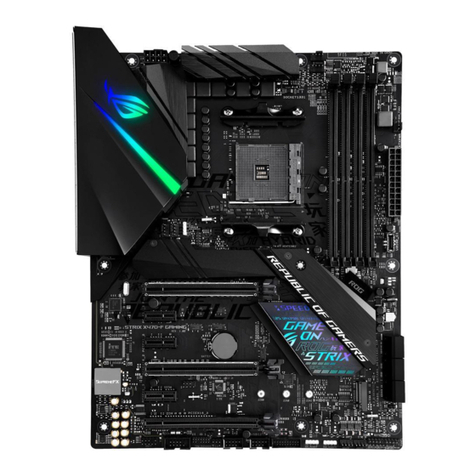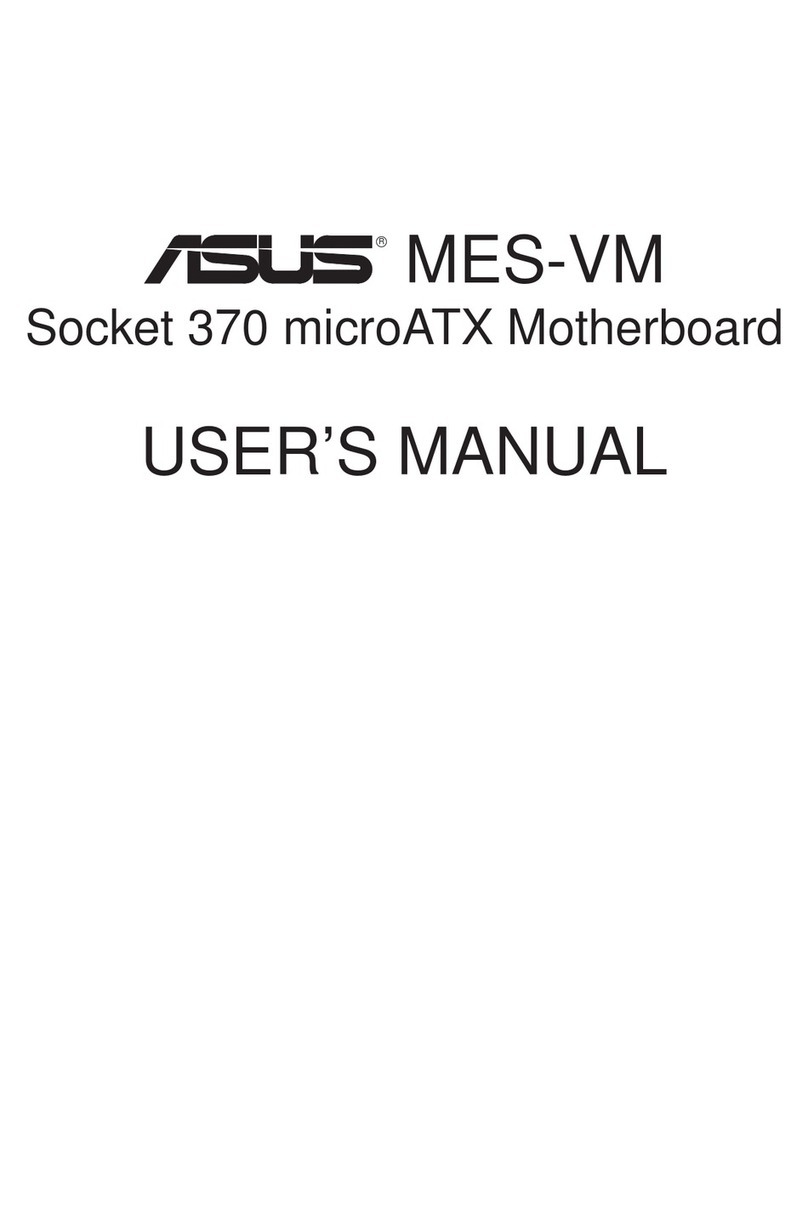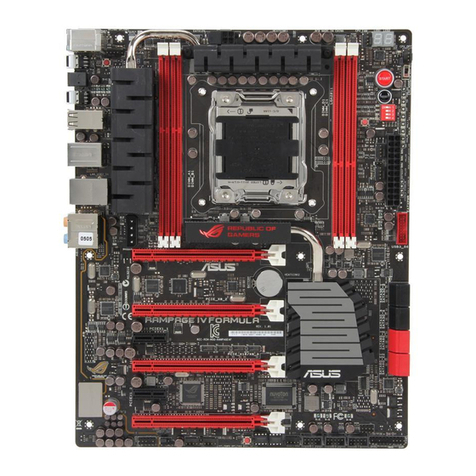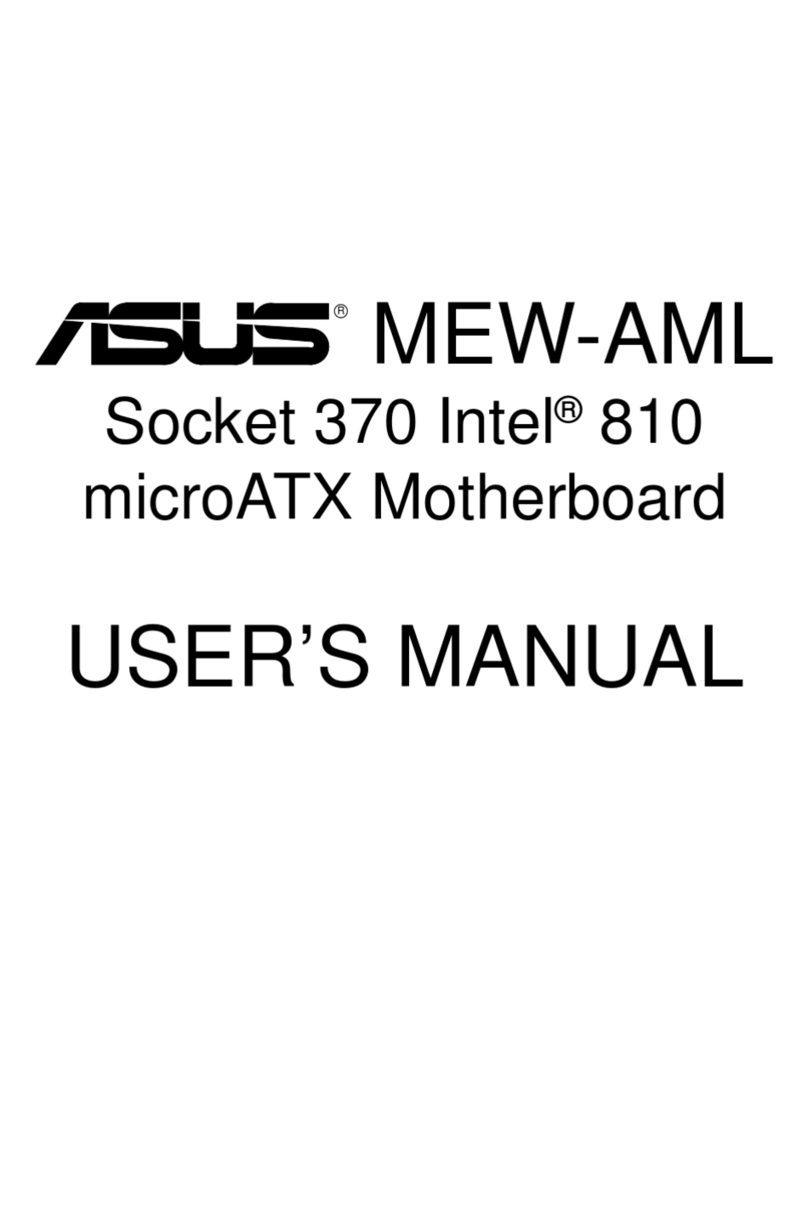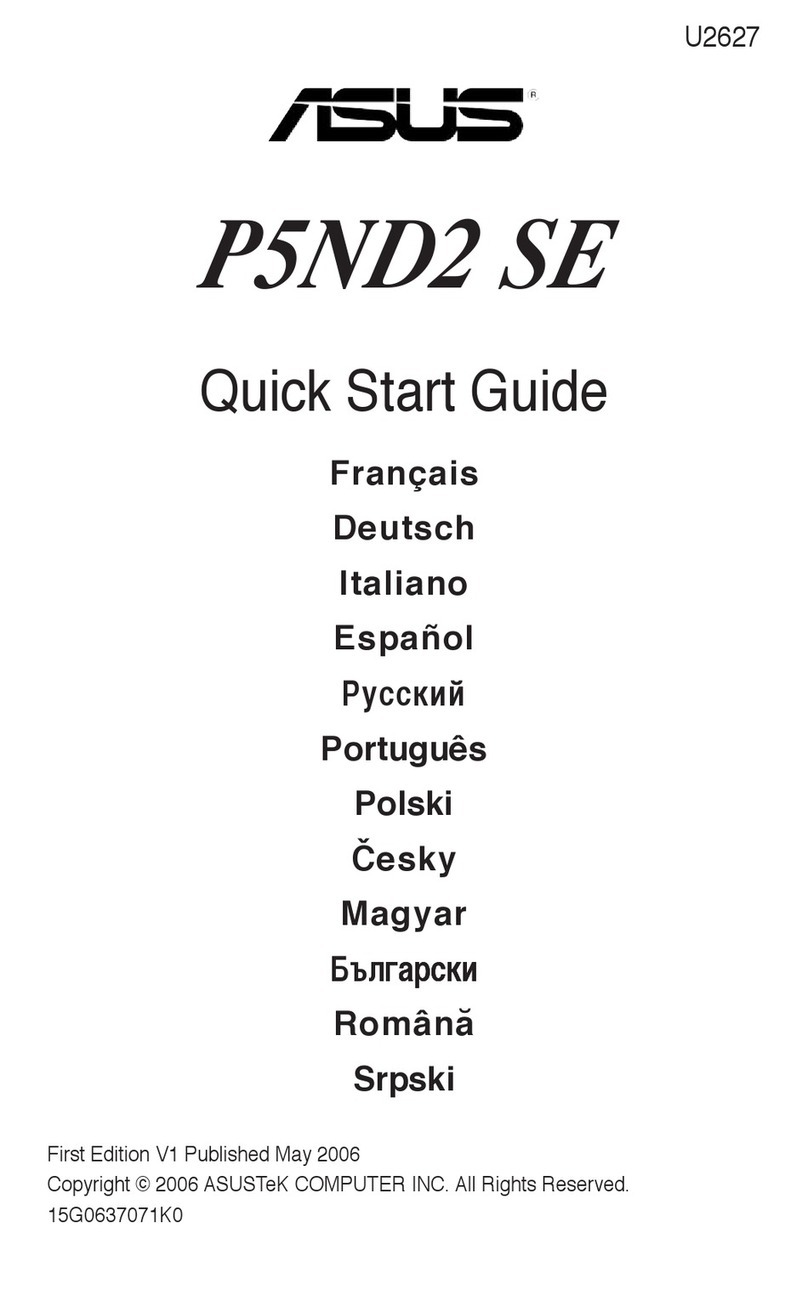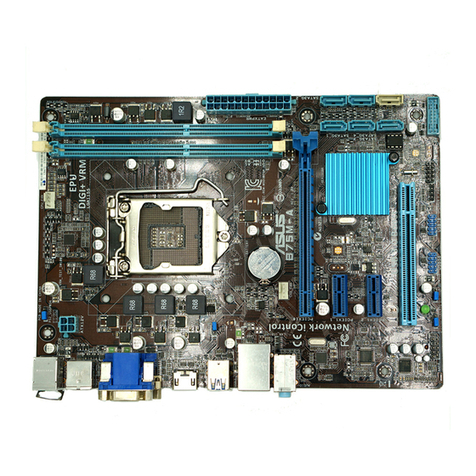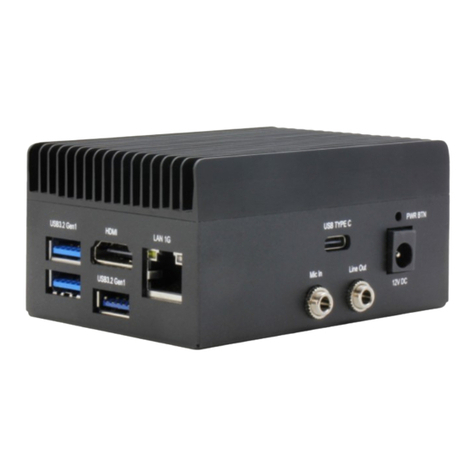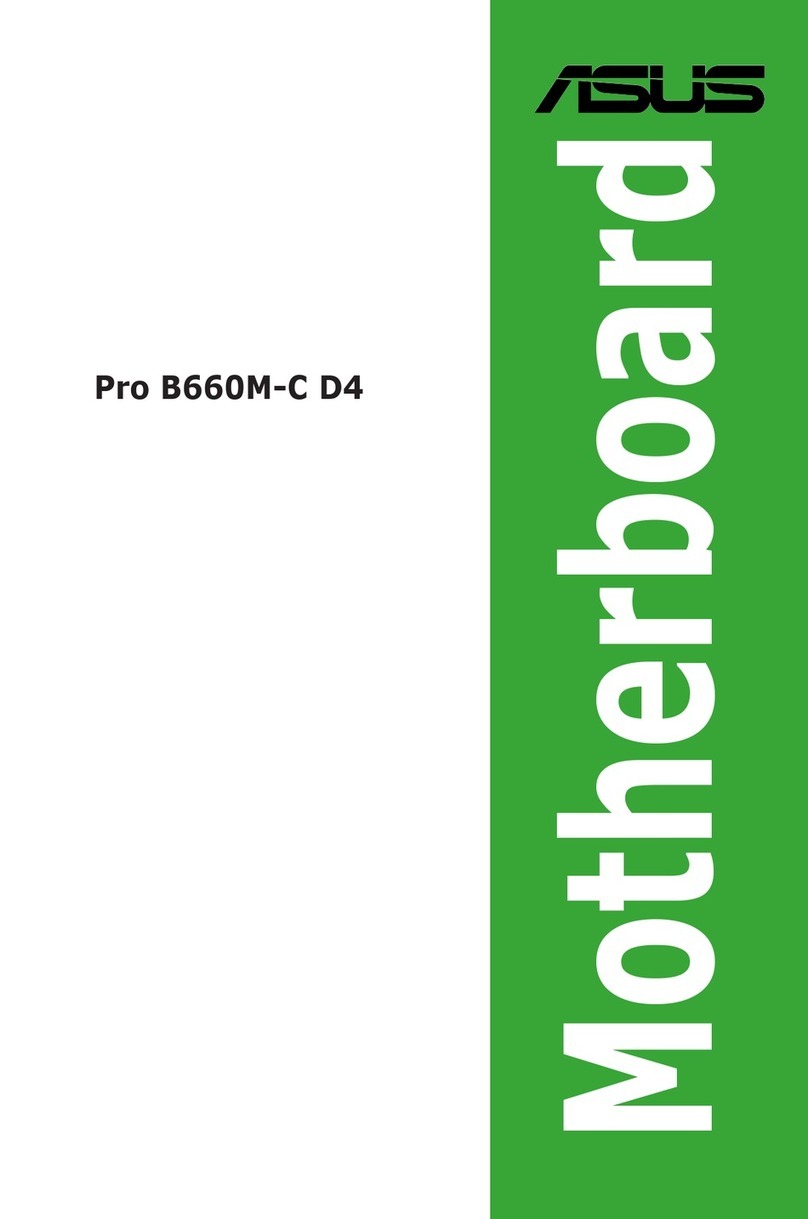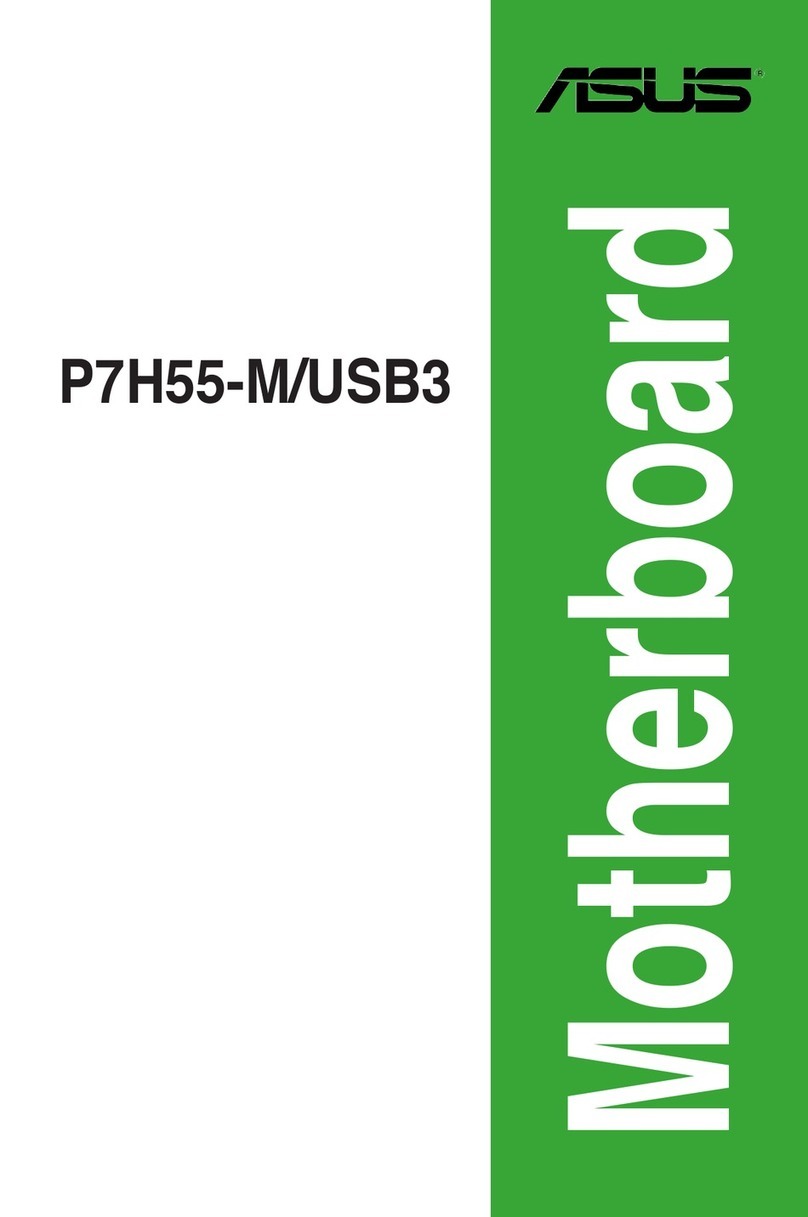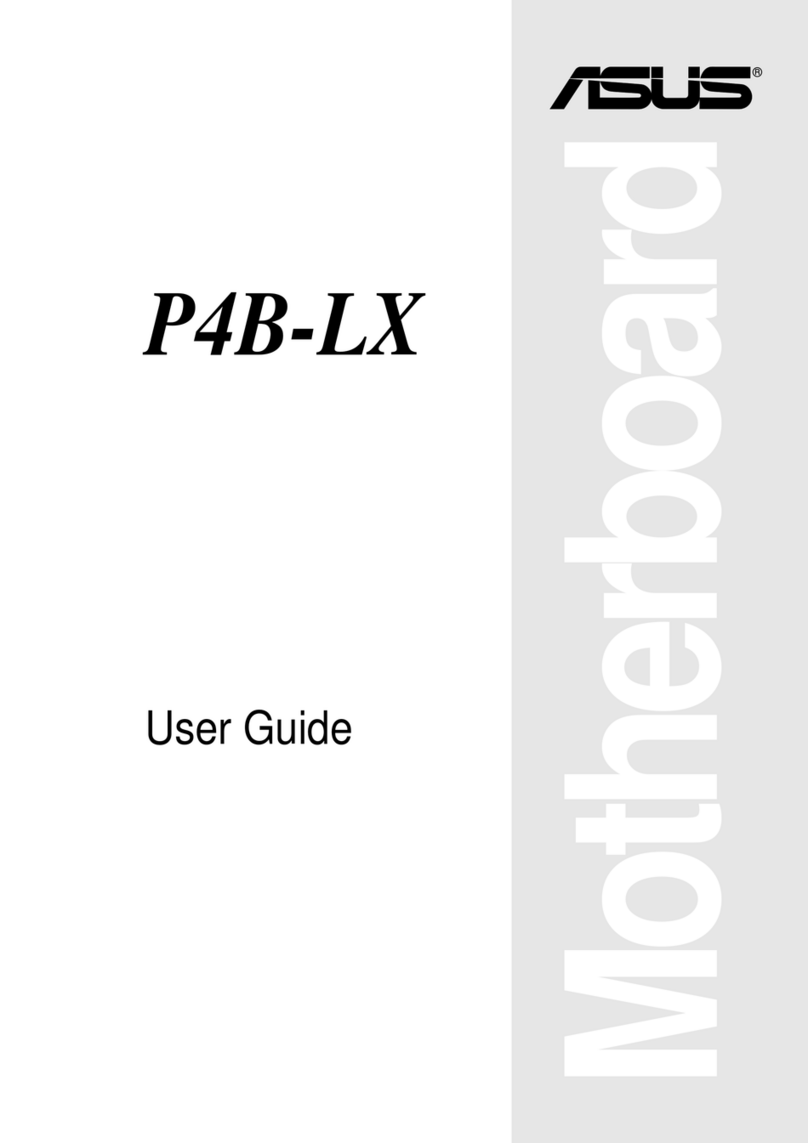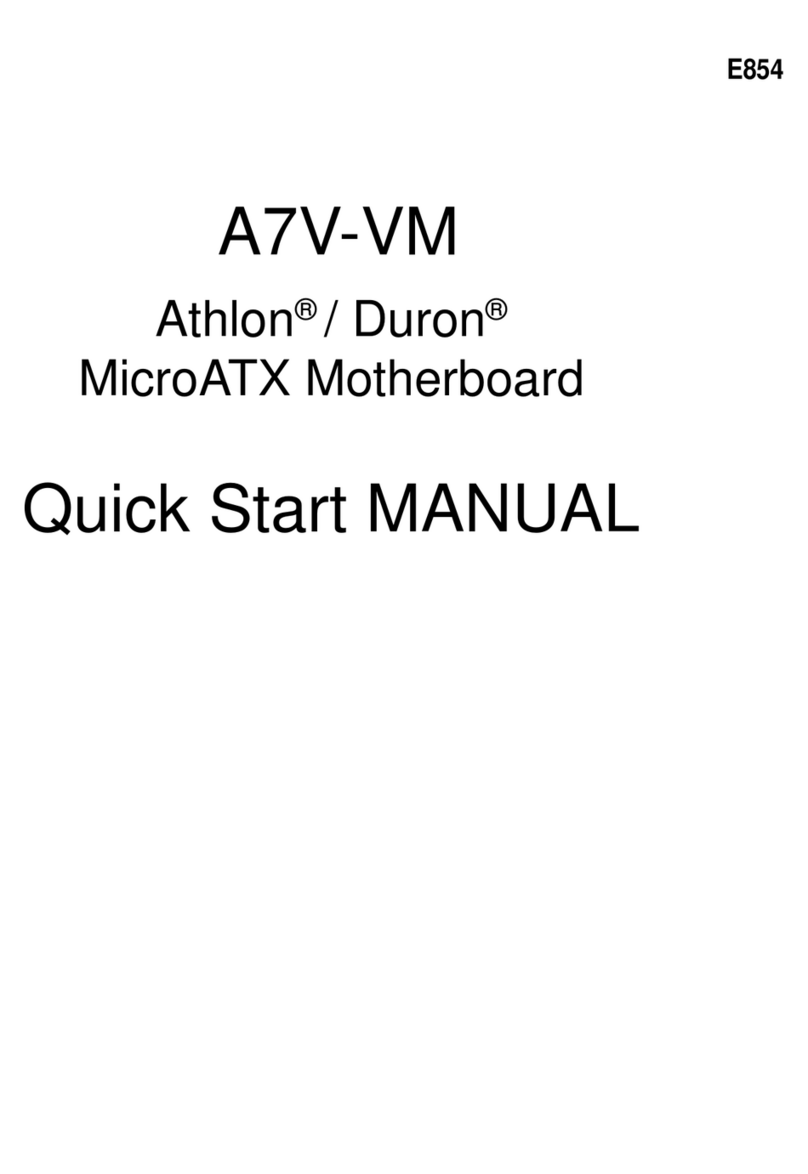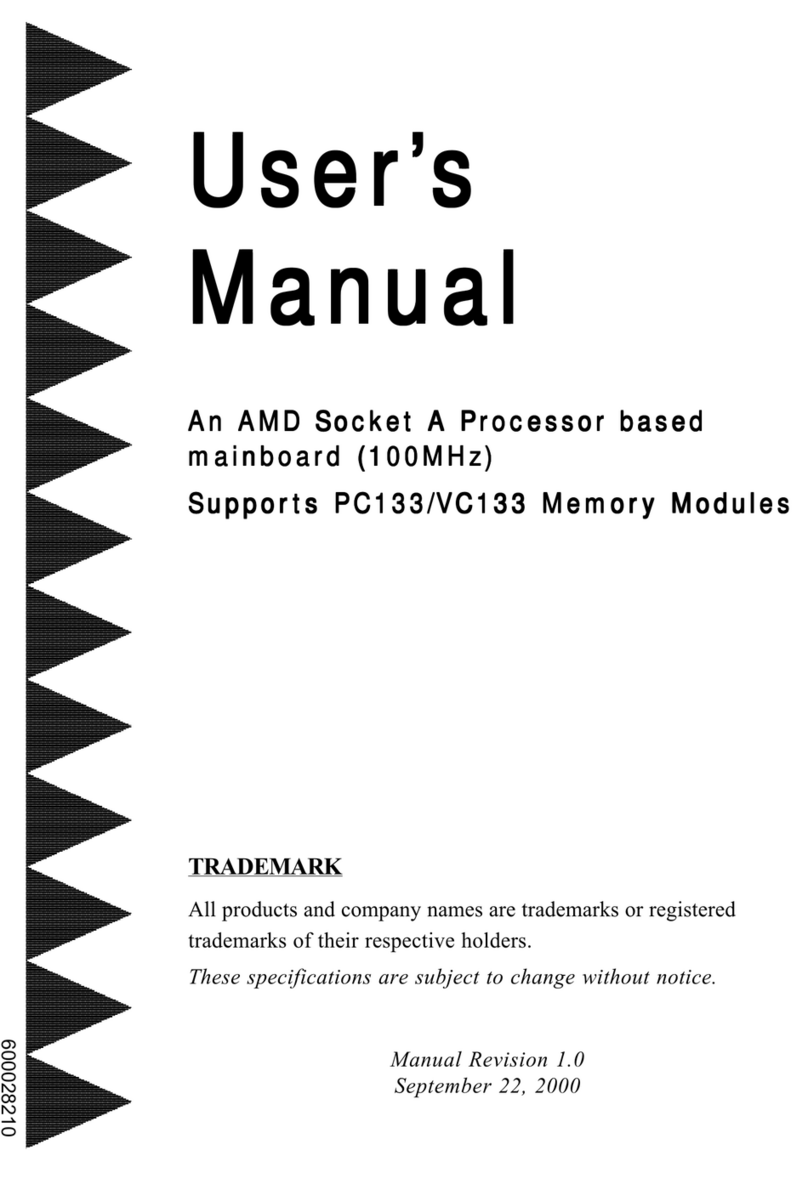iviv
iviv
iv
Contents
2.7 Connectors ......................................................................... 2-27
2.7.1 Rear panel connectors .......................................... 2-27
2.7.2 Internal connectors ............................................... 2-28
Chapter 3: Powering upChapter 3: Powering up
Chapter 3: Powering upChapter 3: Powering up
Chapter 3: Powering up
3.1 Starting up for the first time................................................ 3-1
3.2 Powering off the computer .................................................. 3-2
3.2.1 Using the OS shut down function ........................... 3-2
3.2.2 Using the dual function power switch .................... 3-2
Chapter 4: BIOS setupChapter 4: BIOS setup
Chapter 4: BIOS setupChapter 4: BIOS setup
Chapter 4: BIOS setup
4.1 Managing and updating your BIOS ........................................ 4-1
4.1.1 Creating a bootable floppy disk .............................. 4-1
4.1.2 AFUDOS utility ........................................................ 4-2
4.1.3 ASUS CrashFree BIOS 2 utility ................................ 4-5
4.1.4 ASUS Update utility ................................................ 4-7
4.2 BIOS setup program ........................................................... 4-10
4.2.1 BIOS menu screen ................................................. 4-11
4.2.2 Menu bar ............................................................... 4-11
4.2.3 Navigation keys .................................................... 4-11
4.2.4 Menu items ........................................................... 4-12
4.2.5 Sub-menu items ................................................... 4-12
4.2.6 Configuration fields .............................................. 4-12
4.2.7 Pop-up window ..................................................... 4-12
4.2.8 Scroll bar .............................................................. 4-12
4.2.9 General help .......................................................... 4-12
4.3 Main menu .......................................................................... 4-13
4.3.1 System Time ......................................................... 4-13
4.3.2 System Date ......................................................... 4-13
4.3.3 Legacy Diskette A ................................................ 4-13
4.3.4 Primary, Third and Fourth IDE Master/Slave ......... 4-14
4.3.5 IDE Configuration .................................................. 4-15
4.3.6 System Information .............................................. 4-16
4.4 Advanced menu .................................................................. 4-17
4.4.1 USB Configuration ................................................. 4-17
4.4.2 MPS Configuration ................................................ 4-18
4.4.3 Remote Access Configuration .............................. 4-19
4.4.4 CPU Configuration ................................................. 4-21
4.4.5 Chipset ................................................................. 4-22
4.4.6 Onboard Devices Configuration ............................ 4-23
4.4.7 PCI PnP ................................................................. 4-24



